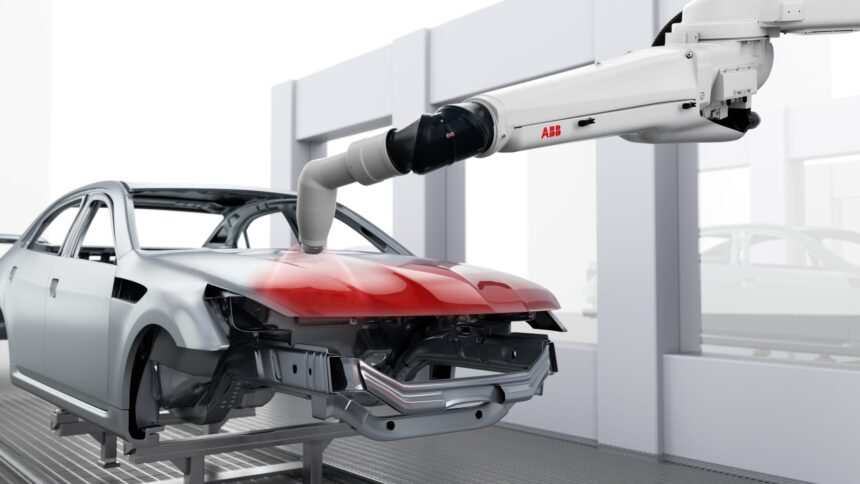ABB has recently introduced the RB 1000i-S paint atomizer, a groundbreaking innovation that is set to transform automotive manufacturer paint shops. This new paint atomizer, when mounted on top of an ABB robot, boasts improved transfer efficiency of over 10% and can reduce paint waste by at least 30%, along with carbon dioxide (CO2) emissions, in comparison to its predecessor, the RB 1000i.
The RB 1000i-S paint atomizer not only offers significant environmental benefits by reducing CO2 and Volatile Organic Compounds (VOC) emissions in automotive paint shops, but also delivers major cost savings and efficiency improvements. ABB claims that this new technology has the potential to result in substantial financial savings for manufacturers.
With the automotive industry’s commitment to achieving carbon neutral factories by 2035, ABB is dedicated to developing products and services that support sustainability goals. The launch of the RB 1000i-S is just one example of ABB expanding its portfolio to help companies meet these challenges head-on.
One of the key features of the RB 1000i-S is its ability to save costs significantly. For instance, a manufacturer producing 200,000 cars annually using a 2.5-litre paint solvent borne per car can potentially save 50,000 litres of paint per factory with the RB 1000i-S, translating to USD 500,000 in direct financial savings.
Customers have the option to order the RB 1000i-S atomizer with a new paint robot or opt for a service kit to upgrade their existing RB 1000i by replacing key components like the bell cup and shaping air nozzle. This service upgrade kit not only supports the circular economy but also maximizes the lifespan of the paint atomizer, enhancing product durability and reducing waste.
In conclusion, the introduction of the RB 1000i-S paint atomizer by ABB signifies a significant step towards sustainable and efficient painting processes in automotive manufacturing. This innovative technology not only reduces environmental impact but also offers substantial cost savings, making it a valuable asset for manufacturers striving to achieve their sustainability targets.






